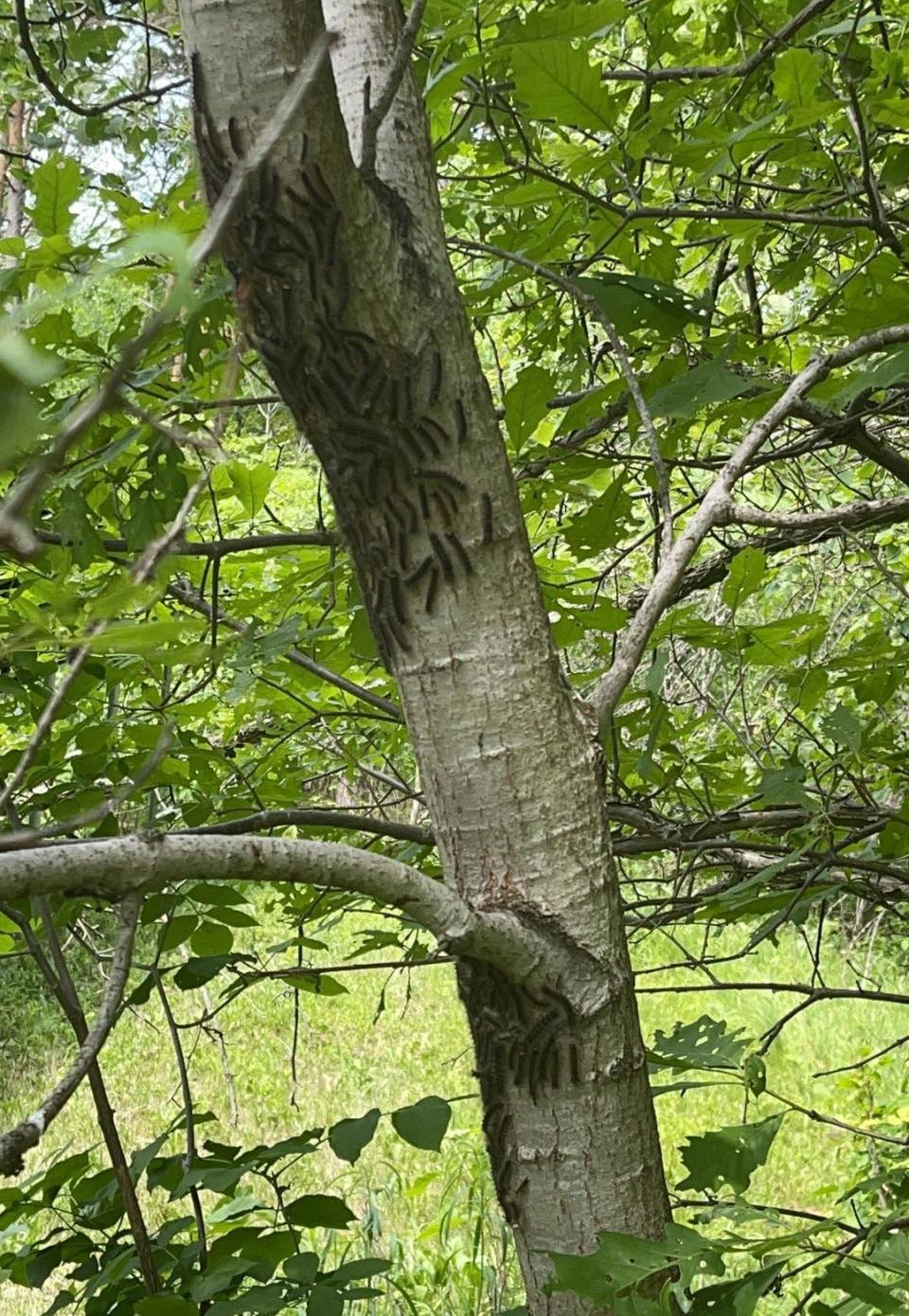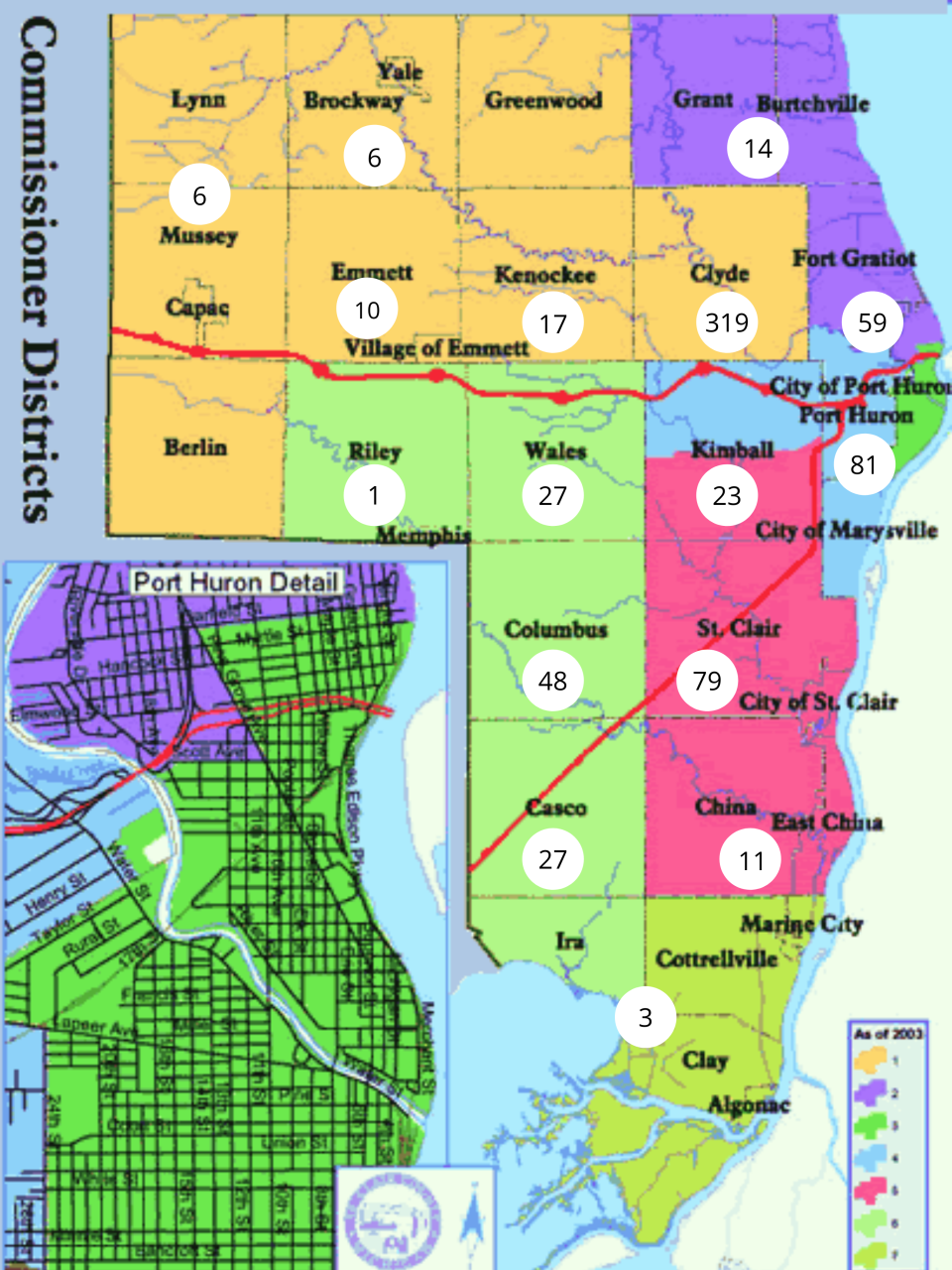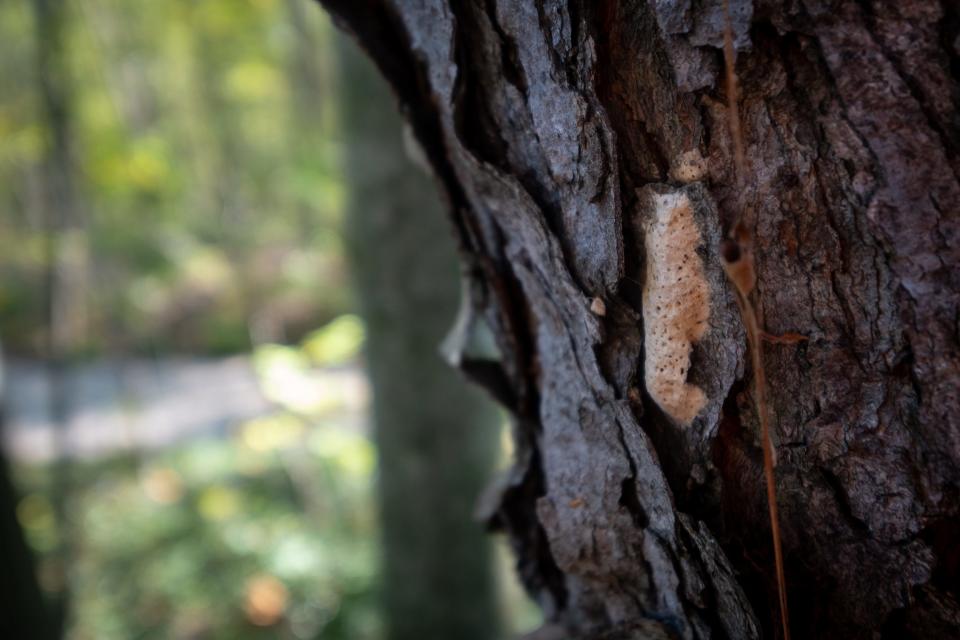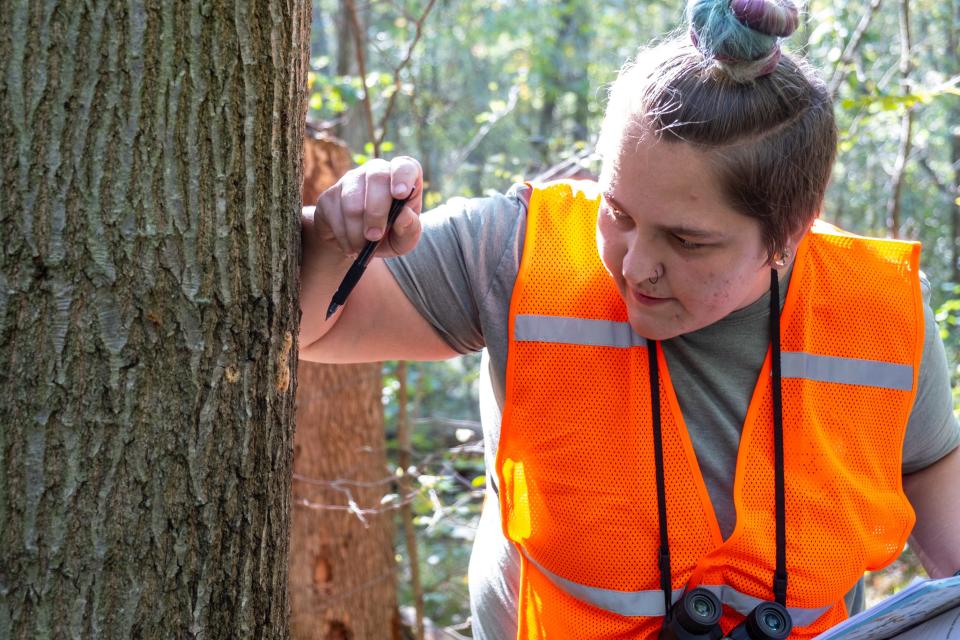Clyde Township had the most reports of this invasive moth species in St. Clair County. Here's why.
On a map of gypsy moth reports across St. Clair County this year, one tree-heavy township sticks out like a sore thumb.
Hundreds of residents complained about the havoc the invasive species’ caterpillars reeked defoliating trees and populating woodsy backyards last spring. And of the roughly 750 reports to the county as of early this month, 319 of them were in just Clyde Township.
“I don’t know why we’re the epicenter of this. I believe it’s because of the Black River and state game land. We have a lot of ravines on our properties, and it seems to follow the ravines,” Clyde Township Supervisor Ernie Manoleas said in an interview last week.
The official said the township began taking reports themselves earlier this year as St. Clair County contracted with Friends of the St. Clair River to oversee response to combat next year’s moth infestation.

On Monday, Kirsten Lyons, the Friends group’s stewardship director, said they were still counting egg masses to predict what the 2022 moth population will look like — with surveyors in Clyde, specifically, late last week and this week.
However, she said she hasn’t seen the survey data, adding, “It’ll be a while yet before we have answers about how much area looks like it’s impacted."
Lyons agreed with Manoleas that the Port Huron State Game Area that “pretty much runs the middle of Clyde Township” was a big factor as to why the heavily wooded community was probably more affected by moth caterpillars in the last year.
The township just has the right kind of environment.
“It’s just full of forested habitat, and it (has) the gypsy moths’ favorite food, which is oak. A lot of oak in Clyde Township,” Lyons said. “I really think it’s pretty much that simple. It’s prime habitat for gypsy moths, and that’s probably why so many homeowners are impacted.”

If the county doesn’t spray, Clyde will
Rise and fall of the populations of gypsy moths are cyclical as they migrate across regions. While it is a common term for the insect, it is also considered an ethnic slur for Romani people.
Manoleas recalled seeing their impact decades ago. With time, they came to the Thumb, and he said he worked with the county to get people on board with aerial suppression to prevent another infestation of the caterpillars — for an insect scientifically named Lymantria dispar, or L. dispar.
“It worked amazingly well,” the supervisor said of the effort. “… So, it’s been quiet up until last year. I’m very cognizant of egg masses. Again 50 acres, we’re down to 25 now, but they’re all trees. That’s why Clyde Township’s been hit so hard.”
Like other residents, Manoleas pointed to being unable to enjoy their backyards, they couldn’t barbecue for weeks as summer rolled in. Then, when he went to clean out gutters, he found a two-inch green and smelly muck — leftover signs of the caterpillars’ frass, or droppings.

Friends of the St. Clair River is slated to begin another phase of oversight early in 2022, using the data collected counting egg masses to gauge where and how they can stymie the next, emerging caterpillar population by spraying an organic pesticide over area foliage by plane or helicopter.
But while the organization will help line up an aerial contractor, county officials must figure out how it would be paid for.
In Clyde, Manoleas said everyone seems to be on board with aerial suppression once again, adding, “If we do not get assistance from the county, we will be doing our own aerial suppression. … But I want to hear what the county’s going to do, also.”
“It’s dependent on the contiguous areas of basically minimum 40 acres,” he said. “Which we can go all the way up and down Abbotsford and Vincent Road and have no problem getting hundreds of acres.”

State has no plans to spray game area
Lyons said Friends of the St. Clair River “would definitely be working closely” with the Michigan Department of Natural Resources, and that she believed the state had no plans to do any aerial suppression against the moths in the area.
DNR spokesman Ed Golder said this was true — that their wildlife division had “not made any plans at this time to do treatments at the Port Huron State Game Area next year.” He did not immediately reply for comment this week when asked if that was similar on state land across Michigan.
Citing his own property, Manoleas said they were spotting egg masses that were smaller than in the past, calling it their “saving grace” as an indication the local moth population was collapsing or moving on.
“But there’s so many of them, it’s still going to be a fiasco this year,” he said.
And the supervisor cautioned his neighbors: “Once they leave Clyde and they crash in Clyde, they’re going to some other community.”
Contact Jackie Smith at (810) 989-6270 or jssmith@gannett.com. Follow her on Twitter @Jackie20Smith.
This article originally appeared on Port Huron Times Herald: Clyde Township had the most invasive moth reports in St. Clair County. Here's why.

